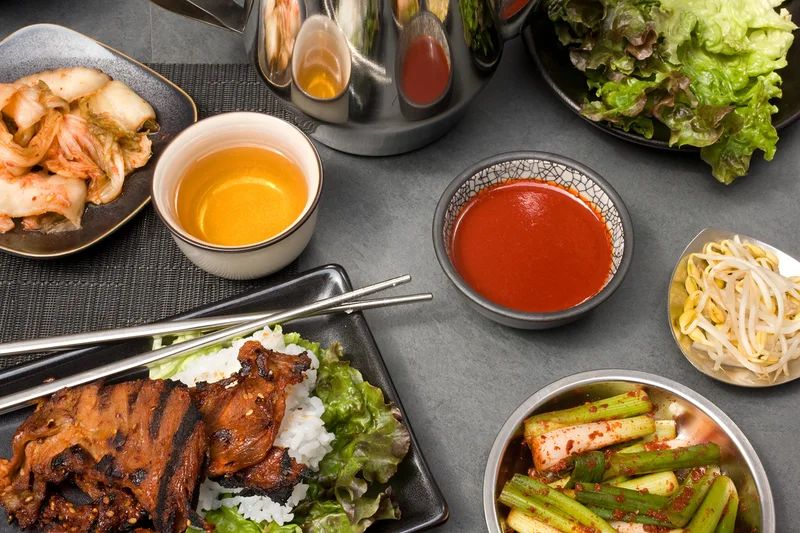Bulgogi is a staple at Korean barbecue restaurants, though it’s more commonly seen made with beef. By far the most important ingredients in this dish are the chile pepper paste and the crushed red pepper: They give it the distinctive spicy-salty note that has made it so popular.
What to buy: Korean red pepper powder or kochukaru is what gives kimchee its spiciness. It can be found in Korean markets in large resealable plastic bags, in different grades of coarseness and spiciness. Choose a grade based on your personal preference.
Korean chile paste or kochujang is found in jars or small plastic tubs in Korean markets or online. Store it in the refrigerator and add spoonfuls to soups, marinades, and salad dressings for a spicy kick.
This recipe was featured as part of our Korean barbecue menu.
- Yield: 4 to 6 servings
- Difficulty: Easy
- Total: 25 mins, plus freezing and marinating time
- Active: 25 mins
- 2 pounds pork butt
- 6 medium scallions, white and green parts cut into 3-inch pieces
- 1 large yellow onion, halved and thinly sliced
- 4 medium garlic cloves, crushed
- 1 (2-inch) piece ginger, sliced into 1/4-inch-thick coins
- 1/2 cup Korean chile paste
- 1/4 cup toasted sesame seed oil
- 1/4 cup soy sauce
- 3 tablespoons Korean red pepper powder
- 3 tablespoons toasted sesame seeds
- 3 tablespoons granulated sugar
- 2 tablespoons sake or mirin
- Place pork in the freezer for 45 minutes or until very firm. Slice into 1/4-inch-thick pieces; set aside.
- Place remaining ingredients in a resealable bag or a nonreactive bowl and stir to combine. Add meat slices and marinate 1 hour or overnight.
- Heat a gas or charcoal grill to high (about 400°F) and rub the grill with a towel dipped in oil. Remove pork from the refrigerator and let sit at room temperature while the grill is heating, at least 20 minutes.
- Remove pork from marinade and let excess drip off. Grill uncovered, turning rarely, until crispy and lightly charred, about 10 to 15 minutes total.

